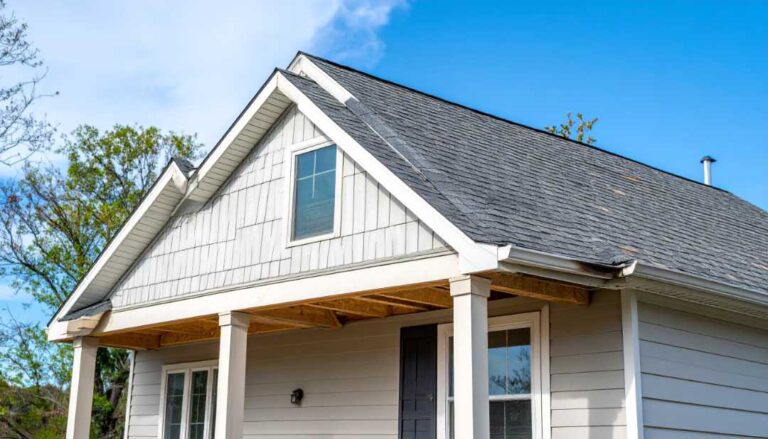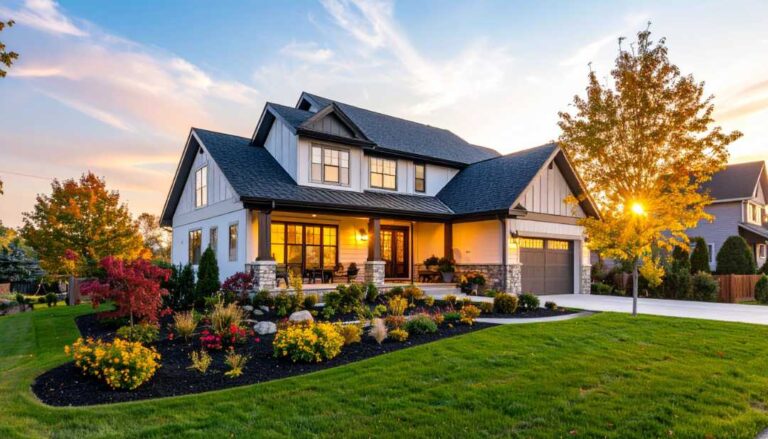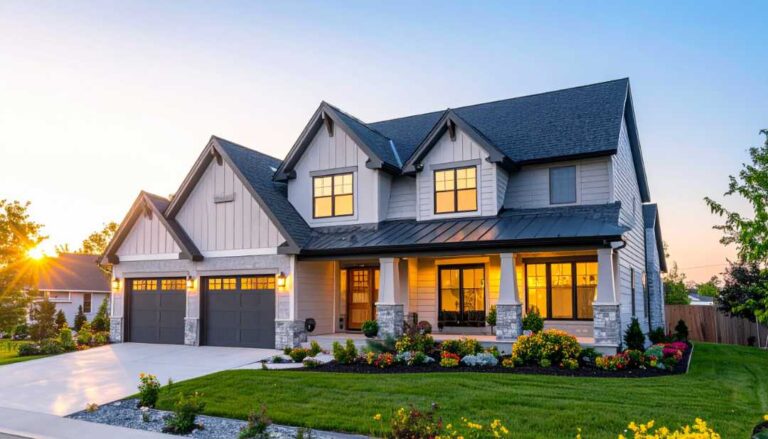More Than Just Shingles – The Secret to a Long-Lasting Roof: Attic Ventilation
When considering a new roof for your Chicagoland home, most homeowners naturally focus on the visible elements: the color and style of the shingles, the warranty, and the reputation of the roofing contractor. These are, of course, vital considerations. However, there’s an often-overlooked, yet absolutely critical, component that silently dictates the ultimate lifespan and performance of your entire roofing system: attic ventilation.
In the extreme and often unpredictable climate of Illinois, where temperatures swing wildly from scorching summer highs to bitter winter lows, proper attic ventilation isn’t just a recommendation – it’s a necessity. It’s the unseen hero working tirelessly behind the scenes, protecting your roof from premature degradation and safeguarding your home from a host of moisture-related problems. Without it, even the highest quality shingles installed by the most skilled roofers can fail prematurely.
At Seidel Exterior Group, we’ve been expertly installing and replacing roofs for Chicagoland homeowners since 1970. We understand that a truly “quality roof” encompasses more than just the shingles; it’s a complete system designed for optimal performance and longevity. This article will explain in detail why proper attic ventilation is so crucial for your new roof, how it works, what happens without it, and how it sets expert contractors apart from amateurs.
The Two Biggest Enemies of Your Roof in Illinois: Heat and Moisture
Your attic acts as a buffer zone between your heated/cooled living space and the outdoor environment. Without proper ventilation, this buffer zone can become a breeding ground for two of your roof’s worst enemies: excessive heat and trapped moisture.
1. The Perils of Excessive Heat in the Attic
In Chicagoland’s hot, humid summers, attic temperatures can soar to 150°F (65°C) or more. Without a way for this heat to escape:
- Premature Shingle Aging: High attic temperatures literally “cook” your shingles from below. This accelerated heat exposure causes the asphalt binder to dry out, become brittle, and lose its protective granules much faster than normal. This leads to premature cracking, curling, and overall degradation, significantly shortening your roof’s lifespan.
- Warping and Buckling: The extreme heat can cause roof decking to warp and buckle, creating an uneven surface that can damage shingles and impact their adhesion.
- Higher Energy Bills: A superheated attic radiates heat back down into your living space, forcing your air conditioning system to work harder and longer to maintain comfort, leading to significantly higher energy consumption and utility bills.
- Structural Damage: Over long periods, excessive heat can even contribute to the deterioration of wooden roof rafters and trusses.
2. The Dangers of Trapped Moisture in the Attic
Moisture enters your attic from various sources, especially in Illinois: humid outdoor air, household activities (showering, cooking, laundry) generating vapor that rises, and even small roof leaks. Without proper ventilation to exhaust this moisture:
- Mold and Mildew Growth: This is a major health concern. Trapped moisture creates a perfect environment for mold and mildew to flourish on wooden components (rafters, decking) and insulation, leading to respiratory issues and a musty smell throughout your home.
- Wood Rot: Prolonged exposure to moisture can cause wooden roof decking, trusses, and rafters to rot, compromising the structural integrity of your entire roof system and potentially leading to dangerous collapses.
- Compromised Insulation: Wet insulation loses its R-value (insulating capacity), becoming ineffective. This means heat can escape more easily in winter and enter more easily in summer, further increasing energy bills.
- Ice Dam Formation: This is a huge problem in Illinois winters. Poor attic ventilation allows heat from your living space to escape into the attic, warming the roof deck and melting snow. This melted water then runs down to the colder eaves (which extend beyond the home’s heated space), refreezes, and forms ice dams. These dams trap more melting snow, forcing water to back up under shingles and into your walls, ceilings, and insulation, causing severe water damage inside your home.
How Proper Attic Ventilation Works: The Balanced System
Effective attic ventilation relies on a balanced system of continuous airflow, creating a passive current that draws fresh, cool air in and pushes hot, moist air out. This typically involves:
- Intake Vents (Lower): These are typically installed at the eaves (soffit vents). They allow cooler, fresh outside air to enter the attic space. It’s crucial that insulation doesn’t block these vents, so baffles are often installed to maintain a clear path for airflow.
- Exhaust Vents (Upper): These are typically located at or near the roof’s peak (ridge vents, static vents, power vents). They allow the warmer, lighter air to rise and escape, drawing in fresh air from the intake vents below.
The “Stack Effect” or “Convection”: This natural phenomenon drives the ventilation. As heat builds up in the attic, the warm air becomes less dense and rises, exiting through the exhaust vents. This creates a negative pressure that pulls cooler, denser air in through the intake vents, creating a continuous flow.
The Mark of an Expert: Seidel Exterior Group’s Commitment to Proper Ventilation
This is where expert contractors differentiate themselves from amateurs. A novice might simply replace shingles, ignoring the critical ventilation system. A true professional understands that the roof is a complete system.
At Seidel Exterior Group, our commitment to your roof’s longevity means we always:
- Conduct a Thorough Ventilation Assessment: Before any new roof installation, our experts will inspect your existing attic ventilation. We assess:
- The type and condition of existing intake and exhaust vents.
- The amount of existing ventilation (is it adequate for your attic size and roof pitch?).
- Whether insulation is blocking airflow.
- Signs of heat or moisture buildup (e.g., rusted nails, mold spots, warped decking).
- Recommend Optimal Ventilation Solutions: Based on our assessment and your home’s specific needs, we will recommend the most effective and efficient ventilation system. This might include:
- Continuous Ridge Vents: The most effective exhaust system, running along the entire peak of your roof for consistent airflow.
- Continuous Soffit Vents: Providing ample intake air along the eaves.
- Attic Baffles (Rafter Vents): Ensuring a clear channel for air to flow from the soffit vents past insulation up to the exhaust vents.
- Static Vents or Power Vents: If ridge and soffit systems aren’t feasible or require supplementation.
- Ensure Proper Sizing and Balance: Ventilation systems must be properly sized and balanced (equal amounts of intake and exhaust) to function effectively. Too much intake without enough exhaust, or vice versa, can create problems. We meticulously calculate the required Net Free Vent Area (NFVA) for your attic space.
- Integrate Ventilation Seamlessly: Our installation teams ensure that the ventilation components are not only effective but also seamlessly integrated into your new roof’s aesthetic. Ridge vents, for instance, are designed to be low-profile and blend with your roofline.
- Educate Homeowners: We take the time to explain the “why” behind proper ventilation, empowering you with the knowledge to understand this vital aspect of your roof’s health.
- Adherence to Building Codes: Proper ventilation isn’t just about performance; it’s also a requirement of most building codes. We ensure all installations meet or exceed local Chicagoland and Illinois building code requirements.
The Cost of Neglecting Attic Ventilation
Ignoring attic ventilation issues during a roof replacement, or opting for a contractor who doesn’t prioritize it, can lead to:
- Premature Roof Failure: Your expensive new roof will degrade much faster than its warranty suggests, leading to early replacement.
- Voided Warranties: Many roofing manufacturers’ warranties are contingent on proper attic ventilation. If a roof fails due to poor ventilation, your warranty claim could be denied.
- Skyrocketing Energy Bills: You’ll continue to pay more to heat and cool your home.
- Mold and Mildew Problems: Costly and potentially hazardous mold remediation in your attic and walls.
- Structural Damage: Wood rot can compromise the integrity of your home.
- Ice Dam Damage: Recurring water damage to ceilings, walls, and insulation during winter.
While investing in proper ventilation adds a small percentage to the overall cost of a new roof, it pales in comparison to the potential expenses of premature roof replacement, energy waste, and water damage remediation. It’s truly an investment that pays for itself many times over.
Your Chicagoland Roof Deserves a Complete Solution
Your new roof is a significant investment in your Chicagoland home’s protection and value. To truly maximize its lifespan and performance, you need more than just quality shingles; you need a meticulously designed and installed attic ventilation system working beneath them. This unseen hero combats the harsh realities of Illinois’s extreme temperatures and fluctuating moisture levels, safeguarding your roof from premature aging, energy loss, and destructive ice dams.
At Seidel Exterior Group, we don’t cut corners. Our commitment to excellence means we consider every component of your roofing system, with proper attic ventilation being a cornerstone of our installation process. We believe in providing complete, long-lasting solutions that give you ultimate peace of mind.
Planning a new roof for your Chicagoland home? Don’t overlook the unseen hero. Contact Seidel Exterior Group today for a comprehensive consultation. Let our experts assess your ventilation needs and design a complete roofing system that stands strong against Illinois’s extreme weather for decades to come.



